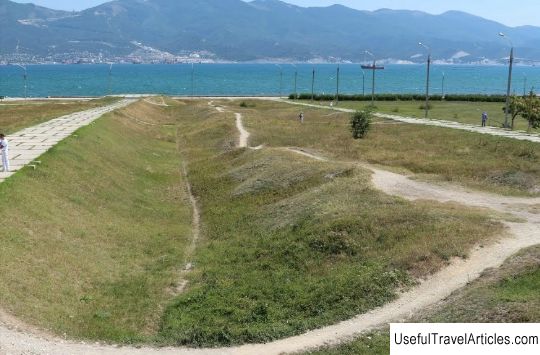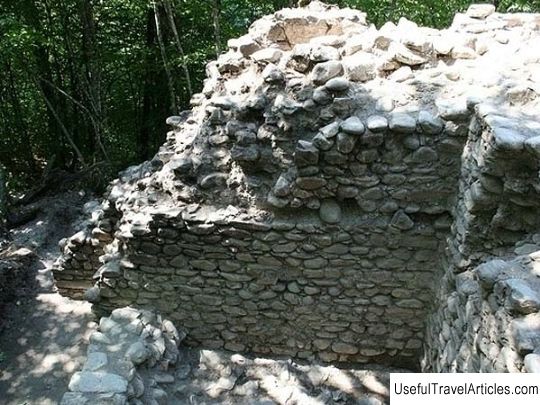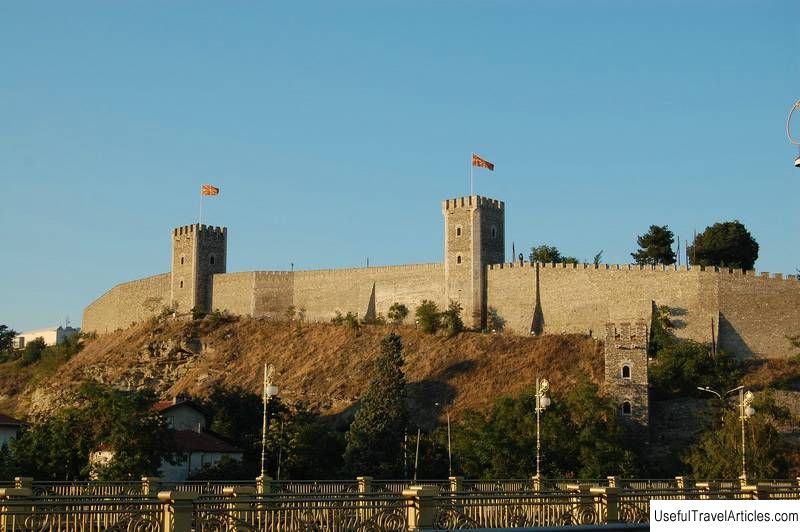Ruins of the Turkish fortress Sudjuk-Kale description and photos - Russia - South: Novorossiysk

Ruins of the Turkish fortress Sudjuk-Kale description and photo - Russia - South: Novorossiysk. Detailed information about the attraction. Description, photos and a map showing the nearest significant objects. Photo and descriptionNovorossiysk is mentioned many times in the history of the eastern Black Sea region. But the first mentions are connected with the fortress Sujuk-kale or Sogudjak, as the inscription on the plate above the entrance gate of the fortress said. According to Turkish historians, the name of the fortress is translated as `` cold '', which apparently refers to the peculiarities of the local weather. The Turks, accustomed to the warmer climate, were probably greatly annoyed by the strong northeastern wind from the mountains, the `` bora '', bringing strong katabatic winds, storms, downpours, icing and floods. The history of the fortress is associated with the Turkish presence in this part of the Black Sea coast since the beginning of the 12th century, a favorable trade and military-strategic position and the confrontation between the young Russian fleet and the Turkish squadron in this region. During the reign of Sultan Ahmed (1703-1730), namely, in 1722, a new defensive stronghold of the Turks, Sudzhuk-Kale, appeared on the shores of the Tsemes Bay, and until the end of the 18th century it retained its important strategic importance on the Black Sea. Historical documents indicate that up to 40 thousand Turkish troops passed through the fortress annually, replenishing the fleet and fortresses of the Black Sea region. During the reign of Catherine II in Russia, the development of the southern Black Sea region began, the construction of ships, the creation of the Russian Black Sea Fleet and construction of his base in Sevastopol. Tsemesskaya Bay and the Sudzhuk-Kale fortress fell into the field of Russia's strategic interests. It was here, on the traverse of the fortress, that the first victory of the Russian sailing fleet was won in May 1773, then the squadron under the command of Yakov Sukhotin destroyed 6 Turkish ships. And just a few months later, another Russian naval commander Yan Kinsberg put to flight after a two-hour battle the Turkish squadron, which significantly outnumbered the group of Russian ships in number and combat power, thereby forced the Turks to abandon the operation to land a six-thousandth landing in the Crimea. Over the years of its existence, the fortress Sujuk-Kale has been destroyed and completed several times, it has known ups and downs. The local highlanders who blocked the fortress also threatened her. There are historical references to the complete extinction of the Turkish garrison from starvation during the blockade by the highlanders in 1784. But it was with 1784 that the beginning of the reconstruction of the fortress under the leadership of the then famous French military engineer Lafitte-Clavet was also connected. It was he who supervised the reconstruction of the Izmail fortress and the Khadzhibey castle in Odessa. According to his plan, Sudzhuk-Kale was significantly expanded - more than a kilometer in length and 600 meters in width. According to the project, the fortress included a stone castle, a fortification and three redoubts. Only the fortification walls 210 meters long were up to 3.5 meters thick! The coastal fortress, unlike the land ones, had two fronts - land and sea, the top was adapted to repel attacks, a six-meter ditch and about three dozen artillery pieces stretched around. At a short distance from the fortress, the remains of three separate redoubts of rectangular shape, they were about 200 meters in size and allowed full control of the Tsemesskaya Bay. Before the founding of Novorossiysk, Russian troops entered Sudzhuk-Kale twice, but both times, under the terms of peace treaties, returned the fortress to the Turks. As a result of constant wars, Sujuk-Kale was already practically destroyed by 1791, and the land itself passed from hand to hand, now the Circassians, now the Turks, now the Russians. In 1811, the Russians returned here to build their own fleet, but before the Patriotic War of 1812 they destroyed the fortress themselves, and the Turks got it as ruins that the Turks had not rebuilt. And since 1829, these lands were finally transferred to Russia. The history of the existence of the fortress Sudzhuk-Kale gives scientists a reason for disputes about the date of birth of the Black Sea city of Novorossiysk. As a result of constant wars, Sujuk-Kale was already practically destroyed by 1791, and the land itself passed from hand to hand, now the Circassians, now the Turks, now the Russians. In 1811, the Russians returned here to build their own fleet, but before the Patriotic War of 1812 they destroyed the fortress themselves, and the Turks got it as ruins that the Turks had not rebuilt. And since 1829, these lands were finally transferred to Russia.The history of the existence of the Sudzhuk-Kale fortress gives scientists a reason for disputes about the date of birth of the Black Sea city of Novorossiysk. As a result of constant wars, Sujuk-Kale was already practically destroyed by 1791, and the land itself passed from hand to hand, now the Circassians, now the Turks, now the Russians. In 1811, the Russians returned here to build their fleet, but before the Patriotic War of 1812, they themselves destroyed the fortress, and the Turks got it as ruins that the Turks did not restore. And since 1829, these lands were finally transferred to Russia.The history of the existence of the fortress Sudzhuk-Kale gives scientists a reason for disputes about the date of birth of the Black Sea city of Novorossiysk.    We also recommend reading Baiyun Mountain description and photos - China: Guangzhou Topic: Ruins of the Turkish fortress Sudjuk-Kale description and photos - Russia - South: Novorossiysk. |




